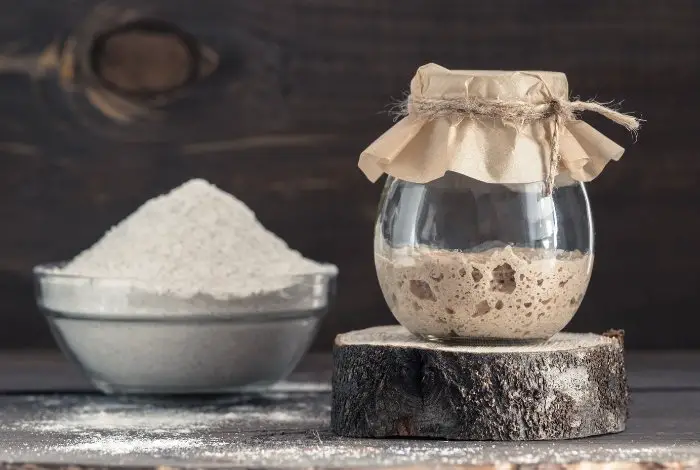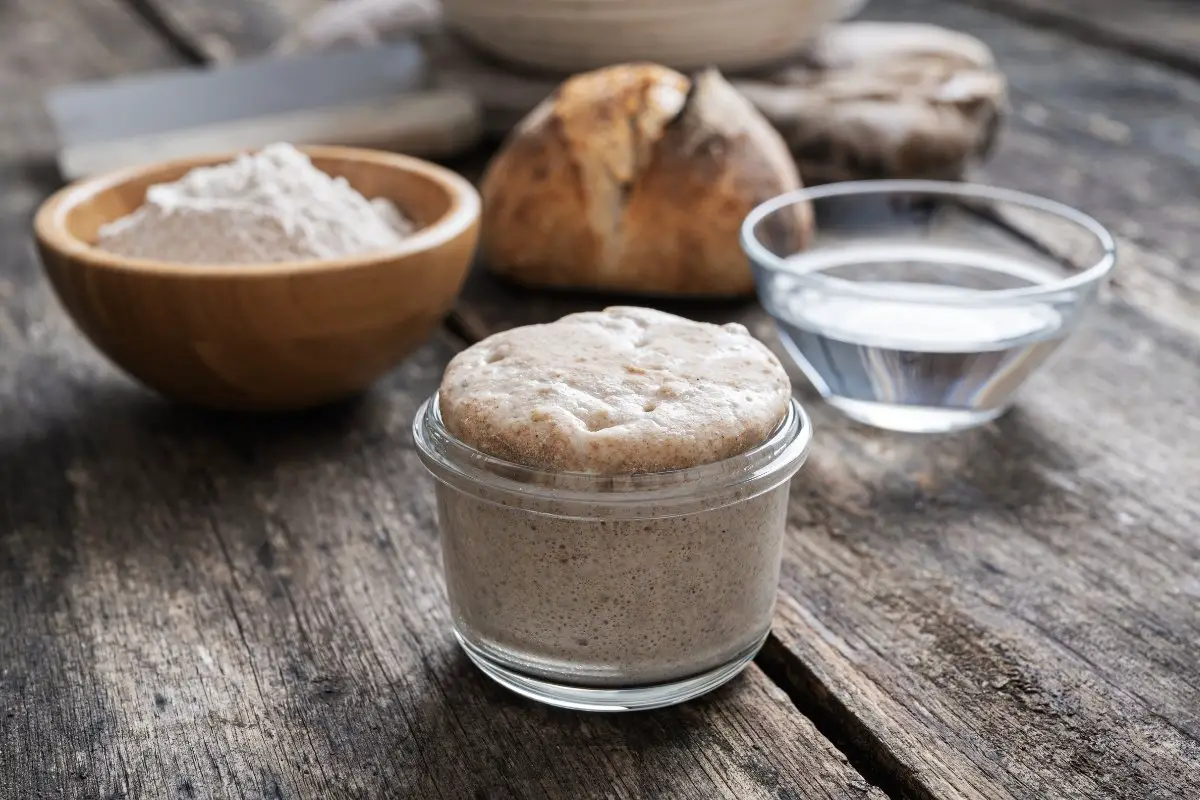Last Updated on January 5, 2022
Can you use bleached flour for a sourdough starter? Since bleached flour kills the yeast, it is best to use unbleached flour. Generally, you can feed the sourdough starters with different types of flour as long as it comes from grain. However, there is a bit of subtle difference in activity levels and flavor. Overall, it all relies on flour usage.
In addition to that, a sourdough starter is a vital building content to create sourdough bread. Also, you can make a sourdough starter by mixing water, wild yeast, and flour. With that, the flour mixture surrounds the air to produce a sourdough starter. Nevertheless, you will achieve precise and similar outcomes once the sourdough begins to settle down with its preparation.
What is a Sourdough Starter?
First of all, a sourdough starter is an active colony of good bacteria and yeast by combining water, ferment, and flour. In addition to that, you can use it to leaven bread and pastries of all types.
Moreover, when hydrated with water and allowed to ferment, wild yeast and lactic acid bacteria feed on the flour’s carbohydrates. Hence, both of them exist with your sourdough starter. As a result, it produces acetic and lactic acid, giving both nutritional and tasty benefits.

Additionally, it is mature, ripe, or fed when a sourdough starter reaches the peak of its rise. It is also ready to bake when the sourdough starter is rising to double or triple its size.
Can You Use Bleached Flour for a Sourdough Starter?
Essentially, it is better to make a sourdough starter with unbleached flour rather than bleached flour because it is destructive to a sourdough starter. As a result, it ruins the wild yeast coated naturally on the grain. In addition to that, the stripping remains to remove the yeast layer on the whole kernel wheat.
It is best to use unbleached flour, especially for sourdough starter producers. Likewise, in making an excellent batch of sourdough starter, it is preferable to use whole rye or whole wheat. Hence, if both flours are available at home, make sure to use the unbleached flour because it provides better results for a sourdough starter.
However, if only bleach flour is available at home, you might as well make use of it. With that, it will take a bit of time for it to settle down. Until done, the yeasting will resume once the starter shall begin with the bleached flour. Additionally, ensure to feed the yeast with an unchanged or similar flour you have provided from the start. Doing this will maintain the yeast and starter in good condition.
You can find delicious recipes by clicking here:
- Easy Banana Bread without Eggs Recipe
- Amazing Lemon Zucchini Bread Recipe
- Amazing Cinnamon Monkey Bread from Scratch without Yeast
The Benefits of Unbleached Flour for a Sourdough Starter
Most flours are usually bleached flour. However, it is the exact process by which it occurs that separates unbleached flour from bleached flour. For this reason, bleached flour contains different chemical agents that help speed up aging. On the contrary, unbleached flour ages naturally. As a result, their distinct processes significantly affect the color and the grain of each kind of flour.
Furthermore, unbleached flour has an off-white color, which stays dull as it ages. In addition to that, it contains more grain compared to bleached flour. Although it is expensive, having a denser texture than bleached flour gives more structure to baked goods. With that, it is best to use it when making yeast bread. Remember, all brands come in varieties, so it is essential to read the label to know what you are purchasing.
Hamilton Beach Bread Maker Machine 2 Lb Capacity
How to Maintain Sourdough Starter?
If you usually bake with a sourdough starter, the most effective approach is by monitoring its activity and feed process at all times. Usually, it takes approximately four to six hours. On the other hand, you can feed a much mature starter every eight hours. For this reason, provide it at least two feedings per day.
Furthermore, it is possible to store the sourdough starter for more extended periods without feeding it. However, it only becomes resilient if you established the sourdough starter. Otherwise, all the natural yeast will die off, so you have to delay the fermentation process. That is why it is best to store it in the refrigerator. Before that, you should let it sit at room temperature first. Afterward, cover it with cling wrap tightly in the fridge for about a week. Keep in mind to feed it between three to four times before you bake it. As a result of feeding it, it provides an excellent rise to your baked goods.
Learn more about How Should Sourdough Starters Smell

Zarah is an experienced pastry chef whose creations have delighted countless customers. With a passion for baking, Zarah has developed a unique style that combines classic techniques with modern flavors. Her desserts are consistently crafted with the finest ingredients, and her attention to detail is evident in the stunning and delectable results. Zarah has a wealth of experience in the pastry kitchen, and loves to share her knowledge with others. Whether it is teaching a class or creating a custom cake for a special occasion, Zarah is committed to making sure every customer is satisfied.


